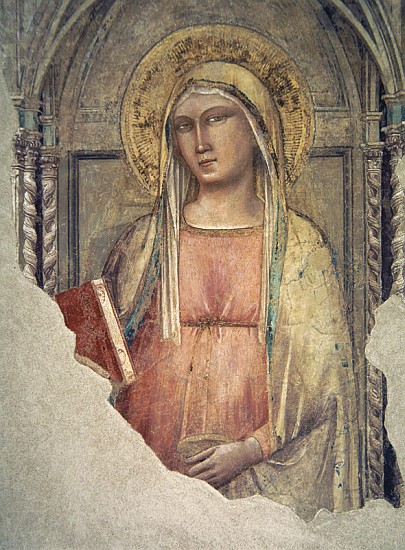The Holly bears a Berry /The Holly and the Ivy è un inno natalizio che compare in forma scritta in un broadside del 1710. Probabilmente è il canto natalizio sull’agrifoglio più popolare e più registrato nelle Christmas Compilations del quale esistono tantissime versioni e interpretazioni.
La tradizione medievale del Natale voleva che le case fossero decorate da rami di sempreverde, in particolare agrifoglio ed edera, affinche il principio maschile e quello femminile si unissero; l’Agrifoglio emblema del principio maschile nel suo trionfo invernale è così rivisitato dal Cristianesimo e identificato con la figura salvifica di Gesù Cristo.
Per meglio dire però nei canti di Natale si attua un ribaltamento di significati: è il principio femminile incarnato in Maria a diventare la regina della foresta.
[english version]
The medieval tradition of Christmas wanted the houses to be decorated with evergreen branches, in particular holly and ivy, so that the masculine and feminine principles would unite; the holly emblem of the male principle in its winter triumph is so revisited by Christianity and identified with the salvific figure of Jesus Christ.
To put it better, however, in Christmas carols there is a reversal of meanings: it is the feminine principle embodied in Mary that becomes the queen of the forest.
The Holly Bears a Berry (The Sans Day Carol)
[ Roud 514 ; Ballad Index K091 ; Bodleian Roud 514 ; trad.]
La versione è nota con il titolo St Day Carol dal villaggio di St Day in Cornovaglia dove è stata trascritta solo in epoca vittoriana. In “The Oxford Book of Carols” (1928) si scrive “Sans Day o St Day Carol è detto così perché la melodia e i primi tre versetti arrivano da St Day nella parrocchia di Gwennap, in Cornovaglia … Dobbiamo il canto alla gentilezza del Rev. GH Doble, al quale il sig. WD Watson ha cantato il brano dopo aver ascoltato un anziano, il sig. Thomas Beard, cantarlo a St Day. Successivamente è stata pubblicata una versione in cornico (Ma gron war’n gelinen) con una quarta strofa, [… a berry as blood is it red …] qui tradotta e aggiunta alla versione inglese di Mr Beard. “
Nella tradizione cornica diversamente dalla versione inglese di “The Holly bears a Berry” è stata mantenuta più chiaramente la struttura melodica della carola medievale nella sua forma di danza saltellante.
The version is known under the title St Day Carol from the village of St Day in Cornwall where it was transcribed in the Victorian era. In “The Oxford Book of Carols” (1928) it is written “The Sans Day or St Day Carol was so named because the melody and the first three verses were taken down at St Day in the parish of Gwennap, Cornwall … We owe the carol to the kindness of the Rev. G. H. Doble, to whom Mr W. D. Watson sang it after hearing an old man, Mr Thomas Beard, sing it at St Day. A version in Cornish was subsequently published ( Ma gron war’n gelinen ) with a fourth stanza, [… a berry as blood is it red …], here translated and added to Mr Beard’s English version.”
In the cornic tradition, unlike the English version of “The Holly bears a Berry” the melodic structure of the medieval carola was more clearly maintained ( in its hopping dance form).
Traduzione italiana Cattia Salto
I
L’agrifoglio porta una bacca
bianca come il latte
e Maria porta Gesù
in fasce di seta
CORO
e Maria porta Gesù
per essere il nostro Salvatore
e il primo albero della foresta
è l’agrifoglio. Agrifoglio! Agrifoglio!
II
L’agrifoglio porta una bacca
verde come l’erba
e Maria porta Gesù
che morì sulla croce
III
L’agrifoglio porta una bacca
nera come carbone
e Maria porta Gesù
che morì per noi tutti
IV
L’agrifoglio porta una bacca
rossa come il sangue
così confidiamo nel nostro Salvatore
che risorse dalla morte.
NOTE
1) Testualmente si ribalta il significato che l’antica religione aveva attribuito all’albero “esorcizzandolo”, così l’agrifoglio diventa “She” simbolo del principio femminile, è infatti paragonato a Maria
2) è ovviamente il fiore dell’agrifoglio ad essere bianco. Le bacche (sull’agrifoglio femmina) sono verdi e d’autunno diventano di un rosso lucido simile a corallo. Ma qui i colori sono chiaramente simbolici
LINK
http://mainlynorfolk.info/watersons/songs/thehollybearsaberry.html
http://www.hymnsandcarolsofchristmas.com/ Hymns_and_Carols/holly_and_the_ivy.htmhttp://www.hymnsandcarolsofchristmas.com/ Hymns_and_Carols/sans_day_carol.htm
http://mudcat.org/thread.cfm?threadid=114408
http://www.christmas-carol-music.org/CDs/SansDay.html
I
Now the holly she (1) bears a berry
as white(2) as the milk,
And Mary bore Jesus,
all wrapped up in silk:
CHORUS
And Mary she bore Jesus
our Saviour for to be,
And the first tree in the greenwood,
it was the holly. Holly! Holly!
II
Now the holly she bears a berry
as green as the grass,
And Mary bore Jesus,
who died on the cross:
III
Now the holly she bears a berry
as black as the coal,
And Mary bore Jesus,
who died for us all
IV
Now the holly she bears a berry,
as blood is it red,
Then trust we our Saviour,
who rose from the dead
FOOTNOTES
1) It is reversed the meaning that the ancient religion has attributed to the tree ,”exorcising it” , so the holly becomes “She” symbol of the feminine principle, it is in fact compared to Mary.
2) it is obviously the holly flower to be white. The berries (on the female holly) are green and in autumn they become a shiny red similar to coral. But here the colors are clearly symbolic

